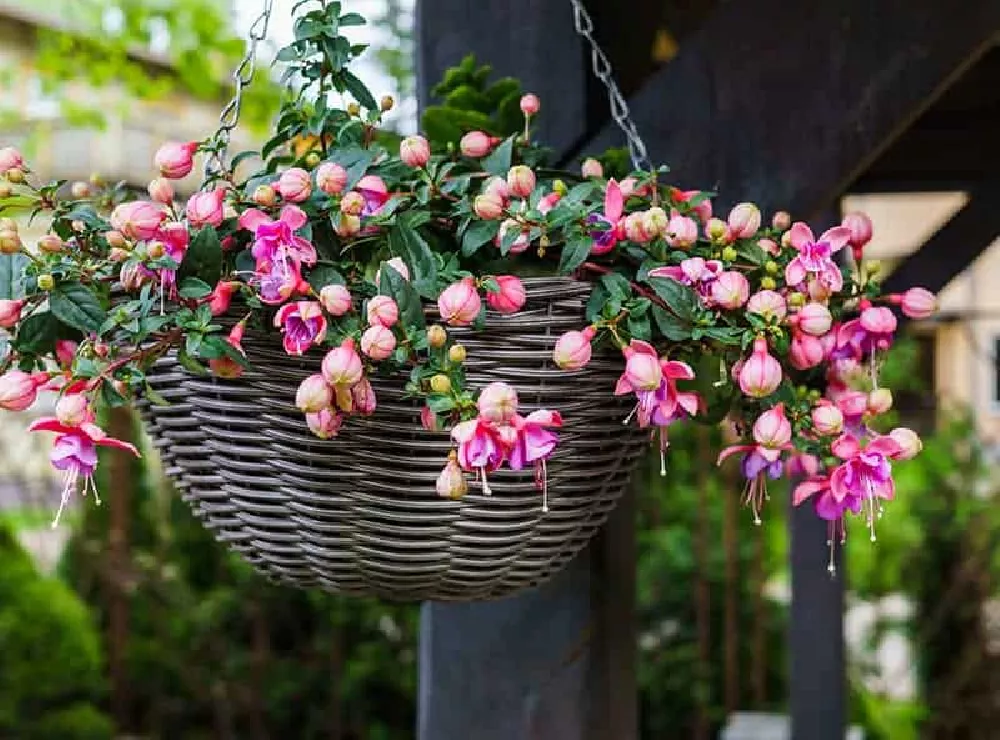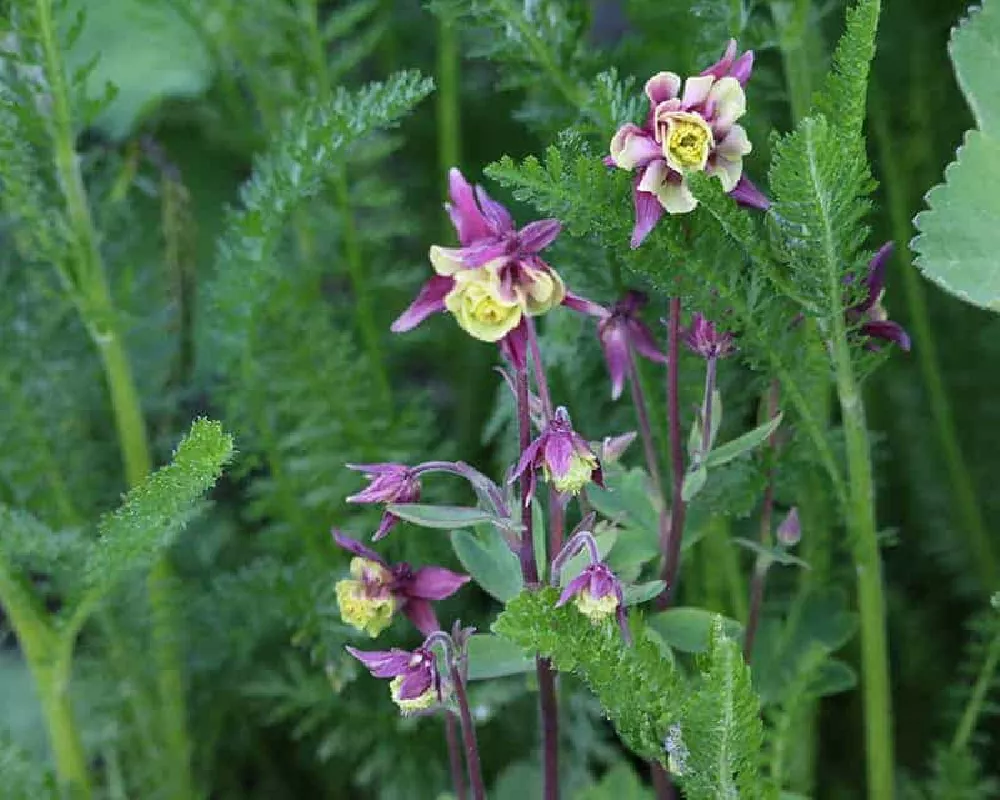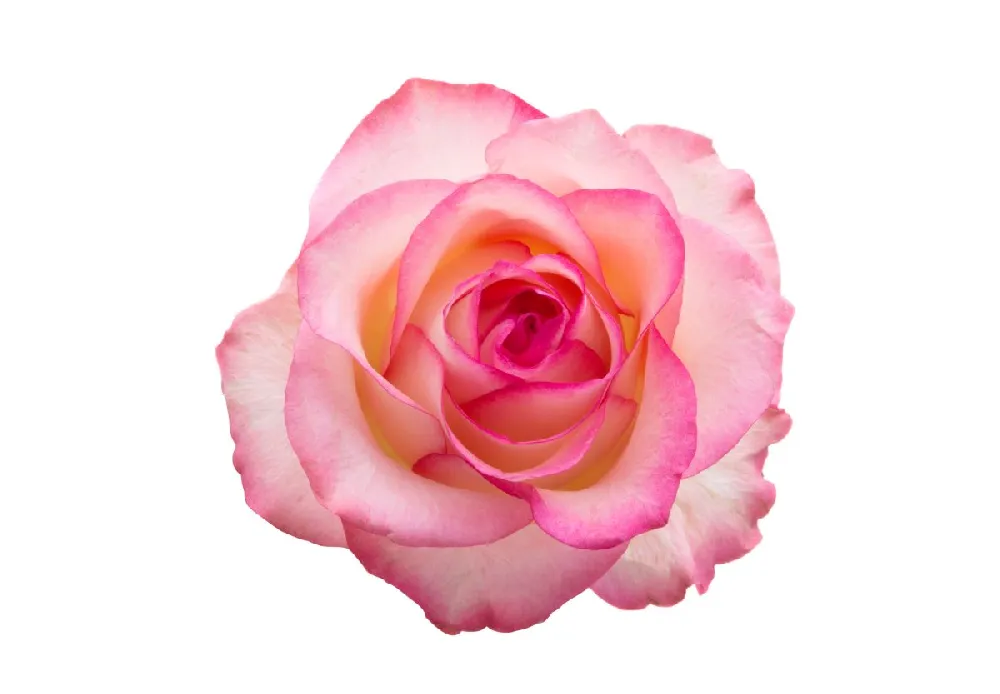A native of the Caribbean and South America, fuchsia plants bring a touch of the tropics to home gardens everywhere. While fuchsia plants can be somewhat finicky when it comes to temperature, light, and moisture, with proper care they will reward gardeners with beautiful, two-toned draping flowers that bloom from spring until fall. Other notable characteristics of fuchsia plants include:
- Ideal for hanging baskets because of their trailing vines and teardrop-shaped blossoms.
- Attract hummingbirds and butterflies.
- Ability to grow in partial or full shade.
Planting and Care
Planting instructions
In North America, fuchsia plants are often grown in hanging baskets or other containers. One advantage of container planting is that you can move your fuchsia indoors if it gets too hot or cold, as these plants don’t like extreme temperatures. Make sure your container has good drainage, and use a well-draining, peat-based potting soil, as fuchsia’s are susceptible to root rot from waterlogged soil. Generally, a 12- or 16-inch pot is sufficient for a fuchsia plant. Note that if you use a plastic container, you should place your fuchsia in a shady location because plastic retains heat.
Watering and nutrients
Striking the right balance of watering for a fuchsia can be tricky as they like their soil continually moist but not waterlogged. Well-draining soil is essential so excess water can escape. During the hottest, driest days of summer, you may need to water your fuchsias once or twice daily to ensure they are staying moist. However, it’s always recommended to check the level of moisture first by dipping your finger into the soil to see how wet it is. Fuchsias have a big appetite. During the spring and summer, feed them every few weeks with a liquid fertilizer or diluted fish emulsion. Refillable watering globe spikes are ideal for keeping fuchsias satiated.
Pollination
Hummingbirds are the key pollinators for fuchsia plants, although they also attract butterflies. If you want your garden to be full of these lively, beautiful creatures, fuchsia plants are an excellent flower to include in your landscaping design. The shape of the fuchsia flower is ideal for hummingbirds, as its hanging flowers allow the birds to easily hover while drinking the plant’s nectar. As they drink, pollen rubs off on the hummingbirds, who then transfer the pollen from flower to flower.
Pruning
Fuchsia plants only produce new flowers on new growth, so pruning is essential to keeping your fuchsia blooming throughout the summer. After a branch has finished blooming, it is safe to clip it back with clean garden shears. This will make way for new blossoms. Pruning away damaged growth will also ensure that your fuchsia plant stays healthy and vibrant throughout the growing season. You can also prune your fuchsia plant to manage its shape. A wagon-wheel is a common shape for fuchsia plants, as it creates a full, balanced look for this delicate plant.
Pests, diseases, and animals
The most dangerous ailment that affects fuchsia plants is fuchsia rust, a fungal disease that causes orange pustules on leaves. If your plant is infected with fuchsia rust, remove affected leaves immediately and treat the plant with fungicide. Fuchsia plants are also susceptible to botrytis, a gray mold that grows on plants in dark conditions. You can remedy this infection with fungicide. Common pests that bother fuchsias include aphids, thrips, whitefly, and fuchsia gall mites. You can treat infestations with insecticidal spray or neem oil. Fuchsia plants are resistant to rabbits and deer.
Temperature
Fuchsias are exotic plants native to Central and South America, where temperatures are typically high. Because of this, Fuchsia plants thrive in warm climates and cannot tolerate low temperatures. They will need to be brought inside before the first frost arrives to be overwintered indoors. You have two options on how to approach this. First, you can move your Fuchsia plant inside and allow its light and heat to keep it alive and enjoy the plant in your home over winter.
Alternatively, you can encourage your Fuchsia to enter dormancy over winter. To do this, place the plant in a dark place, such as a basement or garage, and reduce waterings down to around once a month. The temperature should be maintained at around 50º F. During its dormancy, the plant will not flower but will remain alive. It will undergo very little growth, if any, and will be storing up energy ready for the next growing season.
Around a month before the last expected frost, you should prune your plant back to around half its size and gradually allow it more indirect daylight to prepare it for returning back outside. After the final frost, it can be moved back outside to its original position and continue care as normal.
Humidity
Fuchsias can be quite picky when it comes to humidity. If humidity is continually very high, then they will decline and eventually die, whereas very dry air can be a problem too. Average humidity levels will be best for this plant, so if your local climate is very dry, then a regular misting spray will help to keep these plants in good condition.
Light
Most Fuchsia’s do not appreciate being in full sun conditions. Too much direct sun will cause their flowers to wilt and drop. Instead, allow the plant some direct sun ideally in the morning when it is not at its strongest, and then, protect the plant from the afternoon sun with some shade. The temperature of soil will also have a bearing on how much sun the plant can tolerate.
Fuchsia plants like to have cool soil, and when this is achieved, they can tolerate more sun. Fuchsias with hot soil will struggle to thrive in the sun, and instead should be grown in the shade. Fuchsias in containers will typically have hotter soil than those grown in the ground, and the type of container can affect soil temperature too. Plastic containers get hotter than terracotta ones, so Fuchsia plants kept in plastic containers will likely be better positioned in full to partial shade.
Propagation
Fuchsia plants can be easily propagated with stem cuttings. The ideal time to take a cutting is during spring, but they can be taken right up until fall for successful propagation. Take a new growth cutting of between two and four inches, pinching it off above a set of leaves. Remove the lowest pair of leaves and insert the raw end of the stem directly into a moist growing medium. You can dip the stem into a rooting hormone to encourage rooting if you wish, but Fuchsias tend to root easily, and this step isn’t necessary. Put the pot in a bright and warm location such as a windowsill. The cuttings should root within four weeks.
Flowering
What makes Fuchsia plants so popular are their exotic-looking flowers that bloom all summer long. The typically appear in early or mid-spring, and will persist right through to fall. The flowers themselves are an unusual shape, in a delicate draping style with two-tone coloring. They are quite showy and make beautiful displays in hanging baskets, as well as when grown as shrubs or small trees.
Fuchsia Plant Varieties
There are over one hundred different varieties of Fuchsia, with cultivated types running into the thousands (Better Homes and Gardens). Different varieties can be more or less tolerant of some conditions, so it should be possible to seek out a variety that is perfectly suited to your climate. Some of the most popular varieties include: Hardy Fuchsia, Swingtime Fuchsia, Aurea Fuchsia, Tree Fuchsia, Paniculata Fuchsia
FAQs
Are there different varieties of fuchsia plants?
Yes, there are over 100 different naturally-occurring varieties of fuchsia plants, and hundreds more that have been cultivated by human intervention. Most fuchsia species are native to Central and South America, although others were discovered in the Caribbean and South Pacific. Depending on the variety, fuchsia plants may have upright or trailing growth habits, and may be best suited for slightly different climates. Some of the most popular trailing varieties are the Rapunzel, the swingtime, and the trailblazer. Popular upright varieties include the Phyllis, the army nurse, and the beacon.
How do you propagate fuschia plants?
Propagate fuchsia plants in the spring by cutting a two to four-inch segment of stem tip just above the third pair of leaves. Dip the end of the cutting in rooting hormone and plant it in a tray or pot filled with seed-starter mix. Cover the pot with loose, clear plastic and place in a warm location. Roots should develop in three to four weeks. When new leaf growth appears, you can repot your fuchsia and move it outdoors.
Are fuchsia plants annuals or perennials?
Technically, fuchsia plants are perennials, but depending on the climate they may behave more like annuals. As tropical plants, fuchsias will only survive the winter in USDA hardiness zones 10-11. If you live in a colder climate and want to keep your fuchsia plant alive over the winter, bring it inside before the first frost. Encourage dormancy by placing your plant in a dark location where the temperature is around 50 degrees Fahrenheit, and only water once it once a month.
What is the ideal temperature for fuchsia plants?
Fuchsia plants do best in environments where the temperature remains between 55-85 degrees Fahrenheit, although some hardier cultivars have been developed. In most cases, below-freezing temperatures or consistently high temperatures will kill fuchsia plants. Keep an eye on the forecast and move your plant indoors if extreme weather is expected. These plants prefer humid conditions, so if you live in a dry climate, mist your fuchsia regularly to keep it healthy and blooming.
Are fuchsia plants poisonous?
No, fuchsia plants are not poisonous to humans or animals, making this a safe plant to have in your home if you have pets or small children. In fact, fuchsia flowers are edible and are often used as garnishes and decorations on cakes, pies, soups, and salads. If you wish to use your fuchsia flowers in your cooking, avoid spraying your plant with pesticides and herbicides to ensure that they remain non-toxic.












